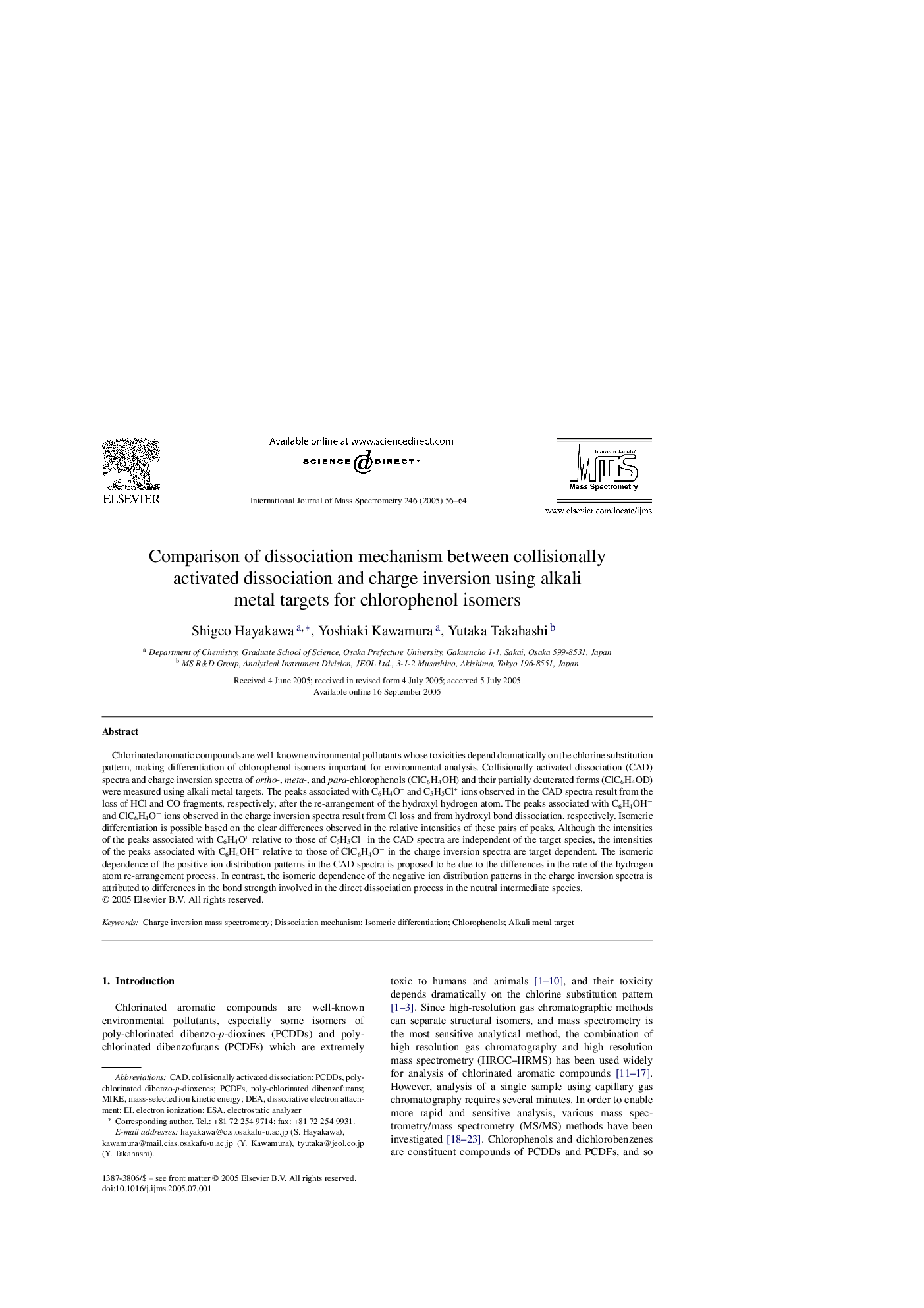| Article ID | Journal | Published Year | Pages | File Type |
|---|---|---|---|---|
| 9746611 | International Journal of Mass Spectrometry | 2005 | 9 Pages |
Abstract
Chlorinated aromatic compounds are well-known environmental pollutants whose toxicities depend dramatically on the chlorine substitution pattern, making differentiation of chlorophenol isomers important for environmental analysis. Collisionally activated dissociation (CAD) spectra and charge inversion spectra of ortho-, meta-, and para-chlorophenols (ClC6H4OH) and their partially deuterated forms (ClC6H4OD) were measured using alkali metal targets. The peaks associated with C6H4O+ and C5H5Cl+ ions observed in the CAD spectra result from the loss of HCl and CO fragments, respectively, after the re-arrangement of the hydroxyl hydrogen atom. The peaks associated with C6H4OHâ and ClC6H4Oâ ions observed in the charge inversion spectra result from Cl loss and from hydroxyl bond dissociation, respectively. Isomeric differentiation is possible based on the clear differences observed in the relative intensities of these pairs of peaks. Although the intensities of the peaks associated with C6H4O+ relative to those of C5H5Cl+ in the CAD spectra are independent of the target species, the intensities of the peaks associated with C6H4OHâ relative to those of ClC6H4Oâ in the charge inversion spectra are target dependent. The isomeric dependence of the positive ion distribution patterns in the CAD spectra is proposed to be due to the differences in the rate of the hydrogen atom re-arrangement process. In contrast, the isomeric dependence of the negative ion distribution patterns in the charge inversion spectra is attributed to differences in the bond strength involved in the direct dissociation process in the neutral intermediate species.
Keywords
Related Topics
Physical Sciences and Engineering
Chemistry
Analytical Chemistry
Authors
Shigeo Hayakawa, Yoshiaki Kawamura, Yutaka Takahashi,
